INTRODUCTION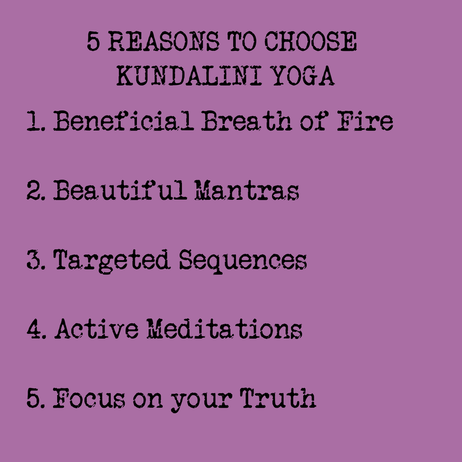 Kundalini Yoga engages me: the breath work opens me up; the mantras inspire me; the movement enlivens and challenges me; the meditations shift me; the internal, silent repetition of Sat Nam (I am Truth) brings me back to who I am again and again. The engagement is what makes it such a doable practice. If I'm not fully engaged, I'm distracted. If I'm distracted, my thoughts take over -- and that is not what I want in my spiritual practice. In this series, I explain 5 of the elements that make Kundalini Yoga an all-consuming, enjoyable, beautiful and healing practice. Each ingredient is, on its own, good for you. And together, they are a recipe for physical, mental, spiritual health and happiness. PART ONE: BENEFICIAL BREATH OF FIRE Breath of fire is a breath practice that is used throughout Kundalini Yoga. The three things I love most about it are: 1) how practicing it interrupts my churning mind, 2) how I feel a little buzzy and wonderful after a round of it, and 3) how it helps me through challenging postures. It's an activating, fueling, fast (about the speed of a panting dog), belly-moving, and audible breath, usually done through the nose. With all that going on, it's actually difficult to let the mind wander. You're in it. You're present. In addition to how it brings presence, breath of fire offers MANY tangible benefits, including:
Like everything in this practice, it's in the experience of it. So, try it (unless you are menstruating, pregnant, or fewer than three months post-partum, in which cases breath of fire is contraindicated). Here are two ways to learn or continue to move toward mastery of this awesome breath:
And you'll love it! You'll love doing it. You'll love the benefits. You'll love how it brings you in the moment. And, if you're like me, it'll help you fall in love with the practice of Kundalini Yoga. PART TWO: BEAUTIFUL MANTRAS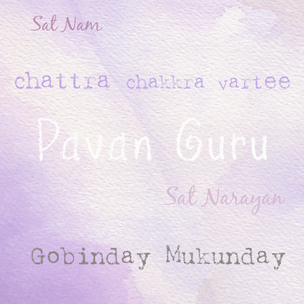 When I first began my Kundalini journey, the mantras (sacred sounds) were a strange and confusing element to me. My first teacher used to shout out Sat Nam Sat Nam Sat Nam Sat Nam Sat Nam Sat Nam Wahe Guru with no explanation. Back then, I regarded mantras as an inaccessible aspect of a powerful practice that I could just choose to tune out, and in so doing, not embrace the full “weirdness” of it all. Little did I know that mantras would enter my heart and remain there ever-available for my healing, for my soothing, for my transformation. In fact, much to my surprise, mantras became the most accessible aspect of my practice. Over the more than two decades I’ve practiced, my body and mind have been in different states. I’ve experienced minor injuries, fluctuating strength and flexibility and my mind has moved all over the spectrum from chaotic to peaceful. At times, I’ve had to pull back from a robust physical practice. At times, the mere suggestion of sitting in silent meditation will send me running away from the mat. But mantras — Sat Nam Sat Nam Sat Nam Sat Nam Sat Nam Sat Nam Wahe Guru — are always there in my consciousness, rising to the surface when needed, redirecting my distracted mind, reminding me that I am a spiritual being, and bringing a feel-good aliveness to every cell. The word mantra means mind projection, and that definition tells so much of the story. In Kundalini Yoga, we repeat sacred sounds to bring our attention to beautiful and uplifting messages and to give our bodies the experience of a higher vibration than our everyday thoughts and language achieve. We draw on an extensive cannon of mantras, which come mostly from sacred Sikh texts. Although they come from a religious tradition, these mantras are for people of all faiths. They access something deeper — heart and soul — than tenets. The above beautiful mantras, along with many others, are another tool in the toolbox of things that make Kundalini Yoga, oh-so-engaging and therefore oh-so-doable. There are three ways to work with mantras in a Kundalini Yoga practice.
Bringing mantra in in these ways has an impact. Like everything in this blog series, they add to the mix a way of staying in the moment. In addition to bringing us into presence, each mantra carries with it a specific benefit. Sat Nam, which I will discuss more in depth in Part 5 of this blog series, brings us into alignment with our authentic self. Gobinday Mukunday lists qualities of divine energy and works to cleanse the subconscious mind and break through deep-seated blocks. Chattr Chakkr Vartee speaks of divine support and helps to release fear. Pavan Guru reminds us of our life force and the nourishment of the breath. It is said to increase energy. Sat Narayan is about the sustaining force in the Universe and it serves to protect the heart and allow us to go with the flow. You can sample my favorite musical versions of each of the above mantras here. Enjoy them. Enjoy the beauty. Enjoy the effects. Enjoy that they are available to us, to make our Kundalini practice that much more meaningful, real, and high. PART 3: TARGETED SEQUENCES When we teach Kundalini Yoga, we teach from manuals and books. We don’t wing it or decide what posture we want to do when. We use prescribed sequences, called kriyas. Almost everything is delineated — how to breathe, how to arrange the body, the hands, the fingers, where to focus the eyes, and how long to do all of it. Why do we do this? Because each kriya is a special alchemy. A kriya is a series of exercises that lead to a specific effect. My teacher, Hari Kaur Khalsa, called them “divine recipes.” Each of these recipes yields a defined result. The outcomes can be physical, energetic, mental, psychological, or spiritual. Some examples of Kriyas are:
Knowing the potential benefit of a kriya adds to my engagement with my practice. When I know what I’m working toward, I’m more committed. So, this is part of my case for Kundalini. It’s another piece of the puzzle, another motivation, another point of focus, another way to go within. I don’t know how many kriyas have been recorded, but I do know that after more than 20 years of practice and 11 years of teaching, I still discover new ones. Here’s an example of a short sequence, Kriya to Experience the Original You.
To experience the original you. This kriya, in particular, motivates me. To experience the original me is one of my priorities in life. Who am I? How can I discard the junk, the baggage, the conditioning that doesn’t fit? How can I be the most confident in my most authentic self? I believe that this series of exercises would help me answer those questions. I believe it because I’ve experienced that these kriyas work, that Kundalini Yoga works. To get the full benefits of any kriya, it must be practiced every day for 40 days. It’s said that if you practice Kriya to Experience the Original You for 120 days, “you will gain great vitality, personal excellence and a new concept of who you are.” It’s about pouring yourself in, your whole self into the kriya, and trusting that this particular sequence will bring the healing it promises. Let Kundalini Yoga kriyas be a vessel for your healing. PART 4: ACTIVE MEDITATIONS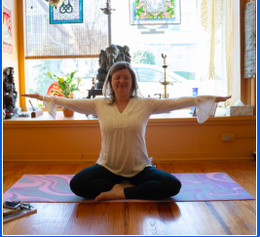 If all you know of meditation is the stereotype of “close your eyes and empty your mind,” it could feel impossible. The Kundalini approach to meditation is quite different, and in my opinion much less intimidating than other forms. Each Kundalini meditation (and there are many) has, like a kriya, a specific intention or outcome. In order to achieve the outcome, there is a combination of tools, which can include an eye focus, a breath pattern, a hand position, an arm movement, and/or a mantra. Having those tools what makes the meditations easier. The tools hold us every step of the way and keep us from straying into a torrent of thoughts. This is so key for me. See, I didn’t go into this yoga in order to meditate. I wasn’t interested in meditation or convinced of the benefits of it. I wanted to move and feel good. But as I’ve experienced these meditations and trained, I’ve become more and more interested and more and more convinced -- to the point that Kundalini Meditations have become an imperative in my life and more than that, they’ve become a reminder of magic. But I can only get to the magic by doing and I’m only willing to do what feels doable and stuff only feels doable when I know I’ll feel engaged. (This is why reorganizing my bathroom cabinets hasn’t gotten done. Not so engaging for me.) Here are some Kundalini Meditations to try that draw on tools to engage you. Meditation to Conquer Self-Animosity Draws on an eye focus, a breath pattern, and a hand position. This meditation is particularly helpful in dealing with self-sabotage. Here how:
Meditation to Experience & Project the Original Self Draws on an arm position and a mantra. Practice this meditation in order to return to your True Self.
Meditation to Open the Heart Draws on an eye focus, a mantra, and an arm movement. This meditation is for those times when you feel your heart has closed and you need to re-initiate the flow of love.
Part 5: FOCUS ON YOUR TRUTHIn Kundalini Yoga, we often focus on the mantra Sat Nam (Truth is my identity). We silently repeat it to ourselves; we chant it aloud powerfully while pulsing the navel; we stretch the sound out as we close class. In my opinion, knowing one’s Sat Nam, one’s Truth is paramount in practice and in life — more important than any other benefit we gain from coming to the mat.
Knowing our Truths is the only way we will live authentic lives and fulfill our purposes. I’m sure there are folks who had their Truths affirmed throughout their childhoods, and as they separated from their parents had the inner resources to stay with it. But I think what’s much more common is parents and society projecting onto their kids and then kids growing up not trusting their own senses of who they are. So we have Kundalini Yoga to come back to it. We have Kundalini Yoga to train our minds to not be pulled off center by our thoughts… We have Kundalini Yoga to open our hearts so that we can love who we are… We have Kundalini Yoga to get our energy flowing so that we have the energy to fuel our Truth… We have Kundalini Yoga to challenge ourselves physically and as we do, we shift; and as we shift the layers of untruth fall away… We have Kundalini Yoga & Sat Nam to reorient to our Truths. The focus on Truth is for me the most profound aspect of practicing and teaching Kundalini Yoga. It’s not just a workout. It’s not just stress relief. It’s not just increasing flexibility. It’s not just energizing. It’s the authentic trajectory of our lives. Sat Nam.
2 Comments
Yogi Bhajan taught that happiness is our birthright and our natural state of being. The problem is that sometimes life disrupts that natural state or our own minds run amok with stress and suffering. With Kundalini Yoga, we can reconnect to our innate joy. For me, my primary happiness equation is Kundalini + Dedication to Practice = Happiness. I've now been practicing Kundalini Yoga for more than two decades. In that time, some difficult, unhappy things have happened. Nevertheless, I've been able to move through the challenges and reconnect to happiness, even in midst of sadness. Sounds like an oxymoron, but it is not. Some things on this human path are hard, unfair, maddening, tragic, but when we have a practice in which we relate to our soul, our connection to Source, the hard stuff comes into perspective and come what may, we can live our birthright. In this blog, I've highlighted 5 aspects of the practice that unlock joy: breath of fire, dynamic movement, meditation, connecting to the authentic self, and chanting. With each, I've offered a way for you to try it on your own. See how it all adds up to happiness. Enjoy!!!!!!! In joy!!!!!!! Return to joy!!!!!! You are joy!!!! Happy Breath. Breath of fire is one of the foundational breath techniques of Kundalini Yoga. If you've practiced breath of fire, you know that it delivers a nice, buzzy feeling in the body. For me, it provides instant relief in the mind because its rhythm and sound take over and everything else recedes. The equation is simple: Buzzy Body + Relaxed Mind = Happiness. TRY IT: Breath of fire is a quick, rhythmic breath through the nose with an equal inhale and exhale. On the inhale, the belly expands a bit. On the exhale, the belly contracts. Ideally, you'll breathe at a rate of 2-3 breaths per second. If you are just beginning to learn, you can start slow and begin to pick up the pace as the navel action becomes natural. So, sit tall in a chair or cross-legged on the floor and try for 1-3 minutes. Do it everyday. You'll be HAPPY you did. Note: if you are pregnant or menstruating, do not practice breath of fire. If you become light-headed, stop, take some long deep breaths and start again when you feel better, focusing on an even inhale and exhale. Happy Energy. In Kundalini Yoga, there is often an emphasis on dynamic movement. We do this because we want to get the energy flowing, the blood circulating, the spinal fluid moving. When we feel this pulsing aliveness in our bodies, we feel good. So too, through dynamic movement matched with the breath, we can move through old patterns of tension, pockets of emotional blockage, and stagnation in the body. We are also focused on raising the Kundalini Energy. Kundalini is so much: it is vitality; it is soul energy; it is awareness; it is our potential. Most of the time for most of us the Kundalini energy lies dormant at the base of the spine. We move to awaken it; to clear the pathway for it. Here's the energy equation: Pulsing Aliveness - Blocks + Awakened Kundalini = Happiness. TRY IT: Cat-Cow is a great movement for the spine. Begin on the hands and knees, hands shoulder-width apart and knees directly under the hips. Inhale and tilt the pelvis forward, arching the spine down and lifting the head. This is the cow position. Think udders hanging down. Exhale and push the mat away and curve the spine like a mad cat, allowing the head and neck to relax down. Continue this movement for 2 minutes, moving rapidly. Do this everyday. You'll be HAPPY you did. Happy Meditations. The mind isn't always our friend. We can make ourselves unhappy and suffer if we allow the stream of thoughts to overtake our experience. That's where meditation comes in. The meditations in Kundalini Yoga have specific intentions. We have a meditation to release anger, to calm the heart, to increase cognitive function, to relieve stress, to reclaim happiness, and many, many others. Regardless of the intention though, meditating daily and addressing the mental storms through meditation, will help you be happier. Meditation helps you cultivate a different relationship to your thoughts, so your thoughts don't own you, don't define you. When your thoughts don't own you, you realize you don't have to suffer with them. When you suffer less, you are happier. The meditation equation (maybe the most important one) is: One Meditation Per Day = Happiness . TRY IT: There is a beautiful practice called Meditation to Reclaim Your Happiness. Don't you love that? We are reclaiming, rather than building, happiness because happiness is our natural state. If you'd like to give this practice a try, you can go to this video with Sirgun Kaur, Kundalini Yoga teacher and devotional artist. Try this meditation everyday and do this same meditation everyday for 40 days. You'll get the full benefits that way and RECLAIM YOUR HAPPINESS. Happy Authenticity. One of our primary focuses in Kundalini Yoga is on the authentic self. Through the practice, we shed the baggage, peel back the layers of falsehoods in order to connect to our truth. How do we do that? One way we approach it is through the repetition of the mantra sat nam, which means Truth is my identity. Repeating sat nam to ourselves creates a focus on and a resonance with Truth. We thread this mantra throughout our practice and it becomes a ritual reminder to drop the masks, forget the expectations of others, and be our truest selves. In my mind, that is the path of happiness. If we are trying to live anything but our true purpose, what is aligned with our soul, we create inner turmoil. If we align, we lift that turmoil and bring ease and joy. Here's the equation: Sat Nam + Sat Nam + Sat Nam + Sat Nam + Sat Nam + Sat Nam + Sat Nam + Sat Nam + Sat Nam + Sat Nam + Sat Nam + Sat Nam + Sat Nam + Sat Nam + Sat Nam + Sat Nam + Sat Nam + Sat Nam + Sat Nam + Sat Nam + Sat Nam + Sat Nam + Sat Nam + Sat Nam + Sat Nam + Sat Nam + Sat Nam + Sat Nam = Happiness TRY IT: Repeat Sat Nam. You can do this anywhere any time. Inhale and silently repeat the sound sat (rhymes with hut); exhale repeat the sound nam (rhymes with mom). Continue as long as you like and when you're done, say to yourself, "I am in my Truth." Do this every day, several times a day. You'll be HAPPY you did. Happy Mantras. Mantras and beautiful music remind us of the magic of the universe. Each and every mantra in the Kundalini Yoga tradition is a reinforcement of the fact that we are part of something larger than our finite selves, that the Universe supports us. Here are just a few examples:
In chanting mantras, we embody their messages. When we chant in the sacred language of Gurmukhi (not our first language), we bypass the intellect and inscribe the sound and meaning in our hearts. Besides, just the beauty of it is uplifting. This is the simplest equation of all: Chanting = Happiness. TRY IT: Chant. Here's a link to a sample playlist of songs with the above mentioned mantras. You can also search for each mantra on Youtube and find wonderful versions. Listen. Learn them and, most importantly, chant along. 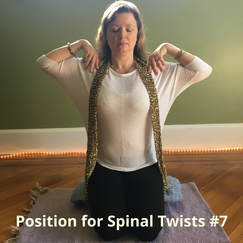 This week and last I've been teaching and practicing the following kriya (sequence of exercises). I LOVE it!!!!! It's for your spine, the navel, the aura, and your kundalini (the full potential of your vitality). What else could you ask for? I encourage you to do it. Prioritize it. Bypass the questioning mind and roll out that mat. Do it everyday. Do it for yourself! Think about showing up for yourself and doing the work as an act of self love.
|
Categories
All
|
Location127 Valley Road
Montclair, NJ |
|

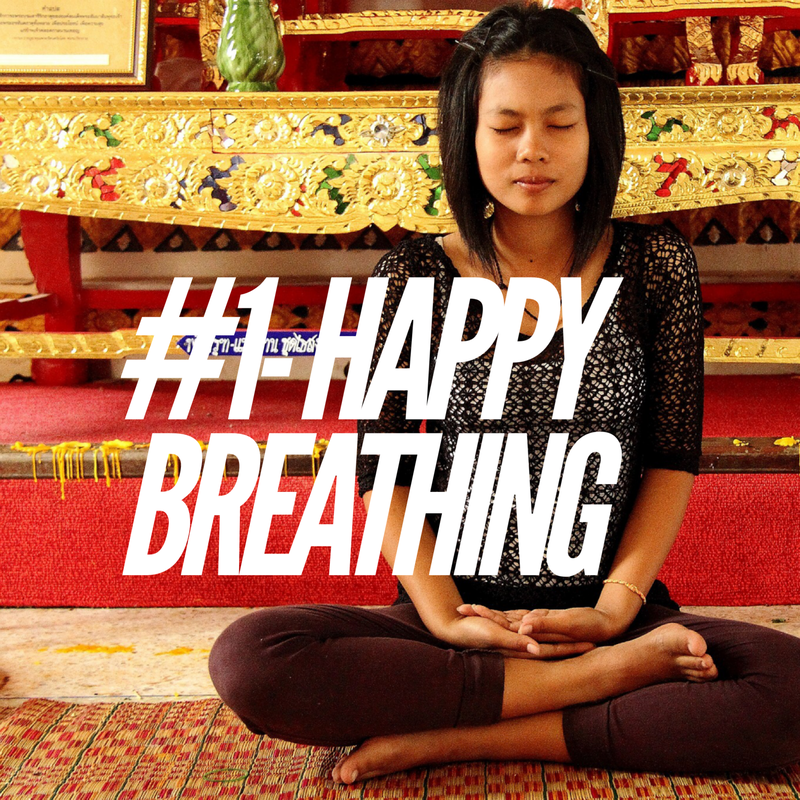
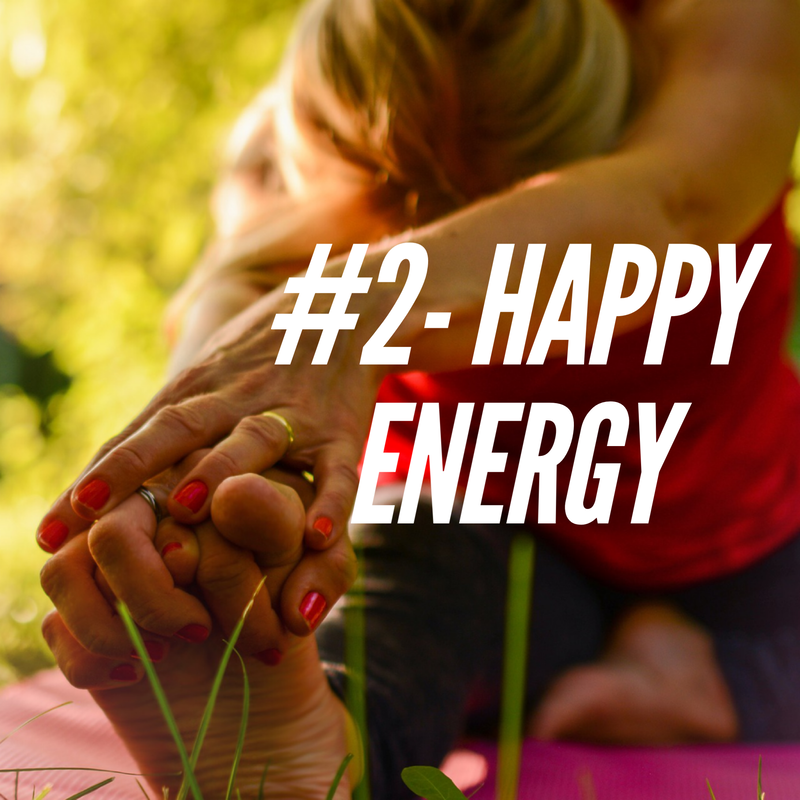
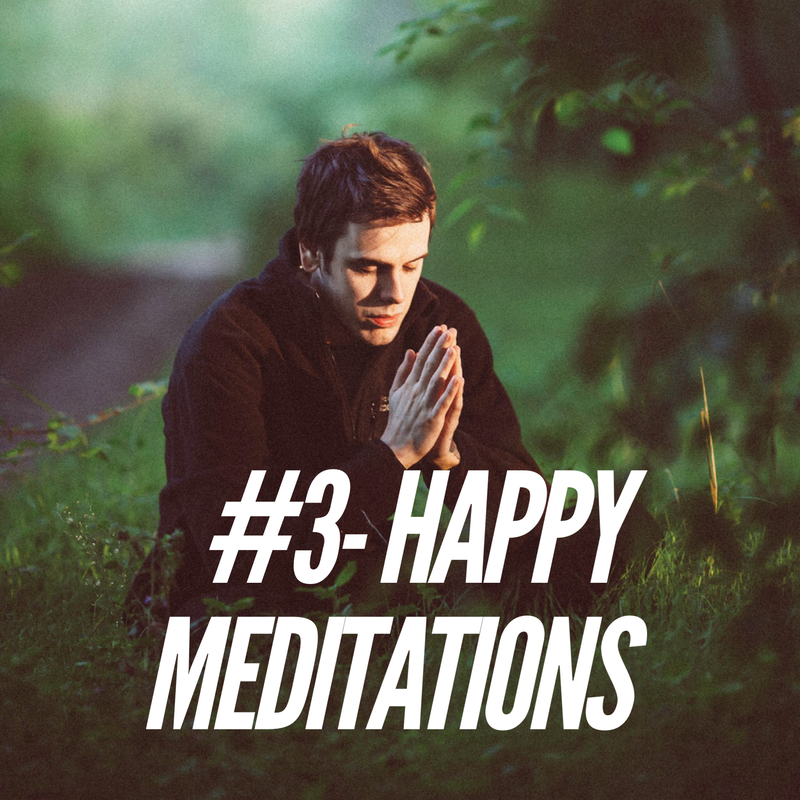
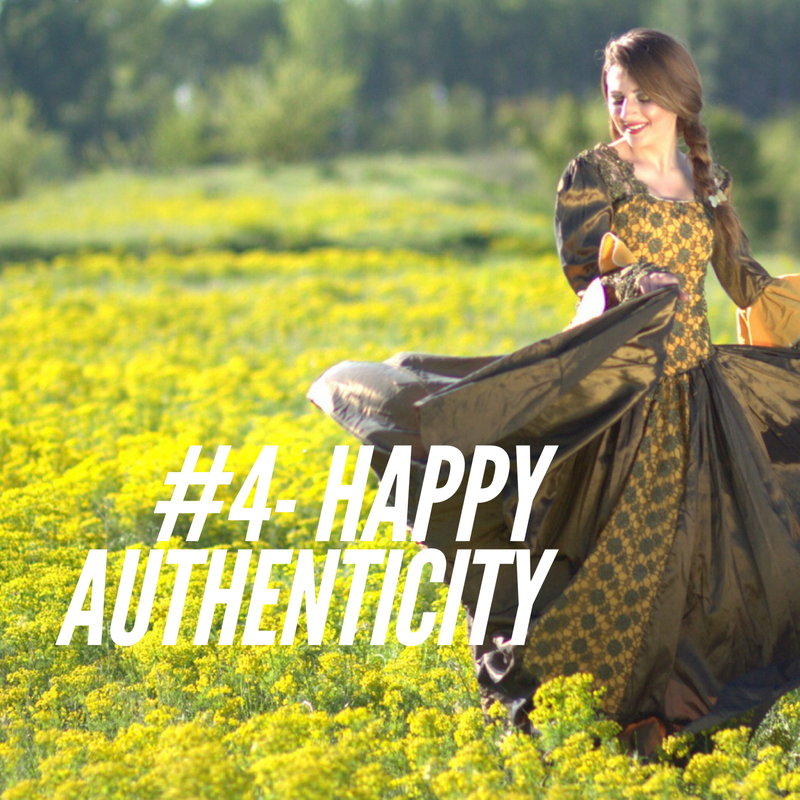
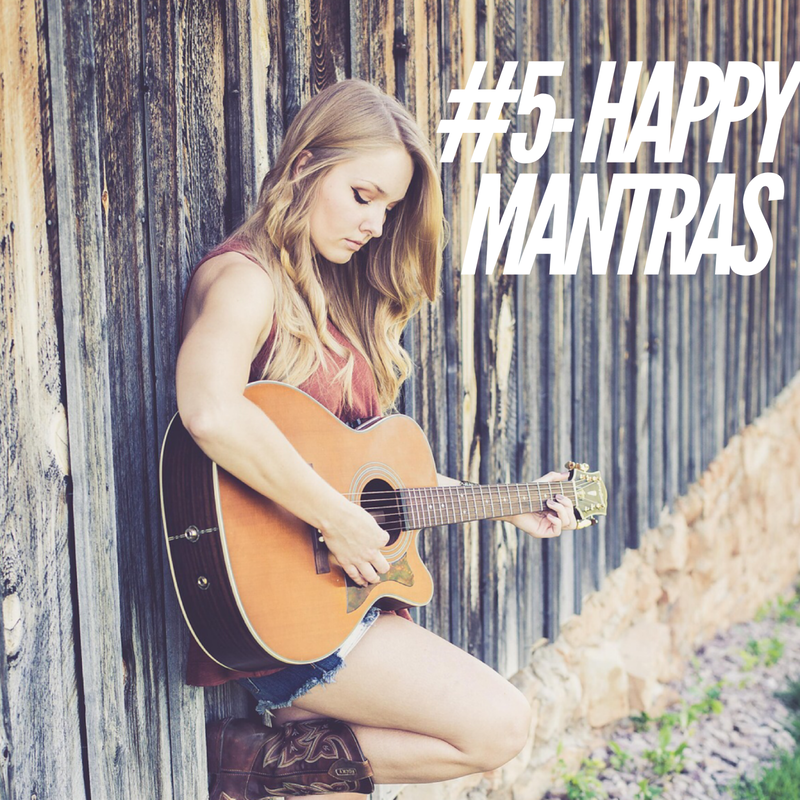
 RSS Feed
RSS Feed